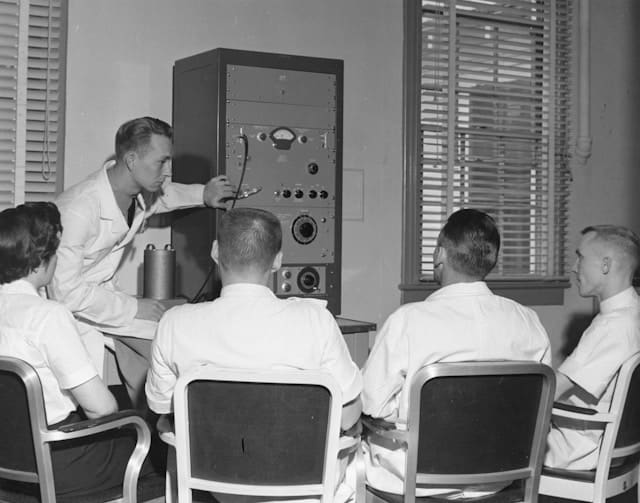
Modern job markets shift faster than most classrooms can keep up with. Career and Technical Education stands at the junction where knowledge meets application, training students to handle tools, technology, and safety standards with precision. When CTE training instruction falls behind current methods, local employers face skill shortages, and students risk entering work without the competencies today’s roles demand.
To keep programs aligned with real job requirements, schools must track how certifications, equipment, and digital platforms change across industries. Regular updates—guided by employer input and performance data—transform classrooms into responsive, high-value training environments. The goal is not a constant overhaul, but rather steady calibration, where every module aligns with what professionals use on the job.
Spotting When CTE Programs Start to Lag
When lab equipment looks dated and course materials mention outdated methods, the program’s alignment has started to slip. Regularly compare learning outcomes to employer task lists and certification updates. Tracking software versions, missing credentials, and outdated processes helps schools keep CTE training strong and aligned with current workplace standards.
Collecting feedback from graduates offers practical insight into what skills are used most often during their first months at work. Combine that input with local job data to find recurring gaps. Updating one module per term based on those findings keeps the curriculum responsive and prevents large-scale overhauls later.
Partnering With Industry to Shape Updates
Direct interaction with employers exposes gaps that paperwork alone misses. Shop-floor visits, brief supervisor interviews, and joint review sessions reveal new technologies and workflows worth incorporating into training. Maintaining an active advisory group comprising business owners, technicians, and recent graduates enables the translation of workplace changes into immediate, practical updates for classrooms and labs.
Schedule brief industry sessions each quarter to gather targeted feedback without overloading staff. Ask employers to highlight three essential tasks or competencies and link them directly to lab exercises or credential paths. These consistent, focused exchanges build relationships and keep instruction synchronized with real equipment, safety practices, and job expectations.
Evaluating Instructor Readiness for New Demands
Instructor effectiveness depends on how well their skills match current industry tools and methods. Begin each term with a focused audit that covers certifications, equipment setup, and software proficiency. Pair observations with quick student surveys to highlight immediate improvement areas. The goal is to identify training needs early enough to adjust instruction before gaps widen.
Support professional growth through structured mentorship and local partnerships. Pair less-experienced instructors with technicians for short externships or co-taught modules. Monthly reflection sessions and shared lesson updates help convert new insights into classroom practice. This ongoing exchange strengthens teaching confidence and keeps instructional methods aligned with current industry standards.
Refreshing Curriculum in Targeted, Manageable Phases
A single updated lab station can redraw a semester’s worth of practice. Prioritize one core assessment tied to certification or common employer tasks, revise its rubric and the corresponding lab procedures, and then stagger equipment purchases and safety checks across two terms to minimize downtime. Keep the initial change limited to one module so schedules and student expectations remain stable.
Run the change as a pilot with one class, track three concrete measures—pre/post task scores, instructor comfort ratings, and employer feedback at sixty days—and refine the module before wider use; a one-term pilot paired with two updated stations and a short employer check often provides clear insight on how and when scaling the update makes sense for broader, long-term program improvement.
Keeping Quality Consistent During Transition
Managing change without losing consistency requires a clear plan and shared accountability. Use a visible schedule to coordinate lesson pilots, assessment checkpoints, and equipment rollouts so revisions stay orderly. Tie each step to measurable indicators—task performance, safety benchmarks, and rubric scores—to identify improvement needs before they affect student learning or certification outcomes.
Regular team check-ins help instructors stay aligned across sections and semesters. Use shared gradebooks, brief peer observations, and short cross-class meetings to compare progress. Summarizing three main alignment issues and one follow-up item on a shared document keeps attention sharp. It helps every instructor teach consistently to the same updated expectations across courses, departments, and ongoing curriculum development efforts.
Sustaining CTE training program relevance means embedding renewal into the academic rhythm rather than waiting for skill gaps to appear. Continuous collaboration with employers, structured curriculum reviews, and instructor development make adaptation routine. Each targeted update—new lab tools, refined assessments, revised certifications—keeps learning precise and practical. Schools that follow this steady cadence advance both community growth and student employability. True success lies in maintaining a system where instruction mirrors workplace practice, enabling every graduate to begin work confident, capable, and prepared to meet the standards and technologies shaping today’s industries.



